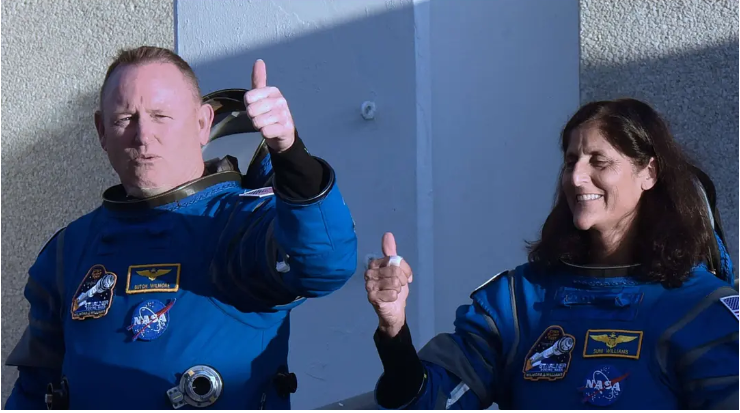Asteroid Chunk Collected by NASA After Desert Landing
Completing its seven-year, four-billion-mile trek through space and back, NASA's OSIRIS-REx spacecraft landed in the desert of the US military's Utah Test and Training Range Sunday, carrying the largest soil sample ever collected from an asteroid....

Facts
- Completing its seven-year, four-billion-mile trek through space and back, NASA's OSIRIS-REx spacecraft landed in the desert of the US military's Utah Test and Training Range Sunday, carrying the largest soil sample ever collected from an asteroid.1
- The material from the 4.5B-year-old asteroid called Bennu, which was 200M miles away when the capsule made contact, is believed to contain dust and pebbles from the time our solar system first formed. It will also be the largest amount of space material brought home since the Apollo astronauts returned with moon rocks.2
- OSIRIS-REx first launched on a rocket called Atlas V from Cape Canaveral, Florida in 2016, taking more than two years to reach the roughly third-of-a-mile-wide asteroid. Once there, it spent another year mapping the space rock to find the best place to land.3
- After the car tire-sized capsule carrying the rocks plunged into the Earth's atmosphere at 27K mph (43K km/hr), it parachuted into the test site. Once it landed, four helicopters flew to the landing site where they hauled it on a 100-foot (30 meter) line to a specially prepared 'clean room' in a military hangar.4
- NASA chief scientist Eileen Stansbery called the condition of the capsule's inside 'extremely clean' and 'remarkably similar to prior to launch,' with OSIRIS-REx chief investigator Dante Lauretta adding that the Utah testing site was optimal for the landing because 'It’s very flat, it’s free of hazards, and they have these amazing tracking resources here'5
- The material collected, the nature of which is expected to be discovered by Oct. 14, will be studied for its 'thermal conductivity, thermal skin depth and bulk density, and other key parameters that will feed into understanding the thermal inertia,' according to Lauretta. He added that they hope to begin processing it on Tuesday.5
Sources: 1Al Jazeera, 2NPR Online News, 3The weather channel, 4Washington Post and 5Guardian.
Narratives
- Narrative A, as provided by The conversation. While some will argue studying a bunch of space rocks is a waste of time and money, celestial missions like the OSIRIS-REx are necessary for understanding how the Earth formed and the potential risks of asteroids and meteorites colliding with Earth. Furthermore, the existence, or at least potential existence, of water has been found on space rocks like Bennu, which provides scientists with a puzzle piece in the quest to find extraterrestrial life. If we wish to understand our solar system and protect Earth from enormous flying rocks, we best not defund the only agency in search of such answers.
- Narrative B, as provided by The planetary society. The fact isn't that NASA programs are useless, but when Congress first funded the planetary defense program almost 20 years ago, it didn't expect a 4,000% budget increase while allocating less than 1% of it to actually defending the Earth from incoming asteroids. NASA, along with the congressmen who see over the agency, must revert to its original promise to study planetary defense of interplanetary objects — otherwise, space exploration is simply a bottomless pit with no fiscal responsibility that the American people can't afford right now.






